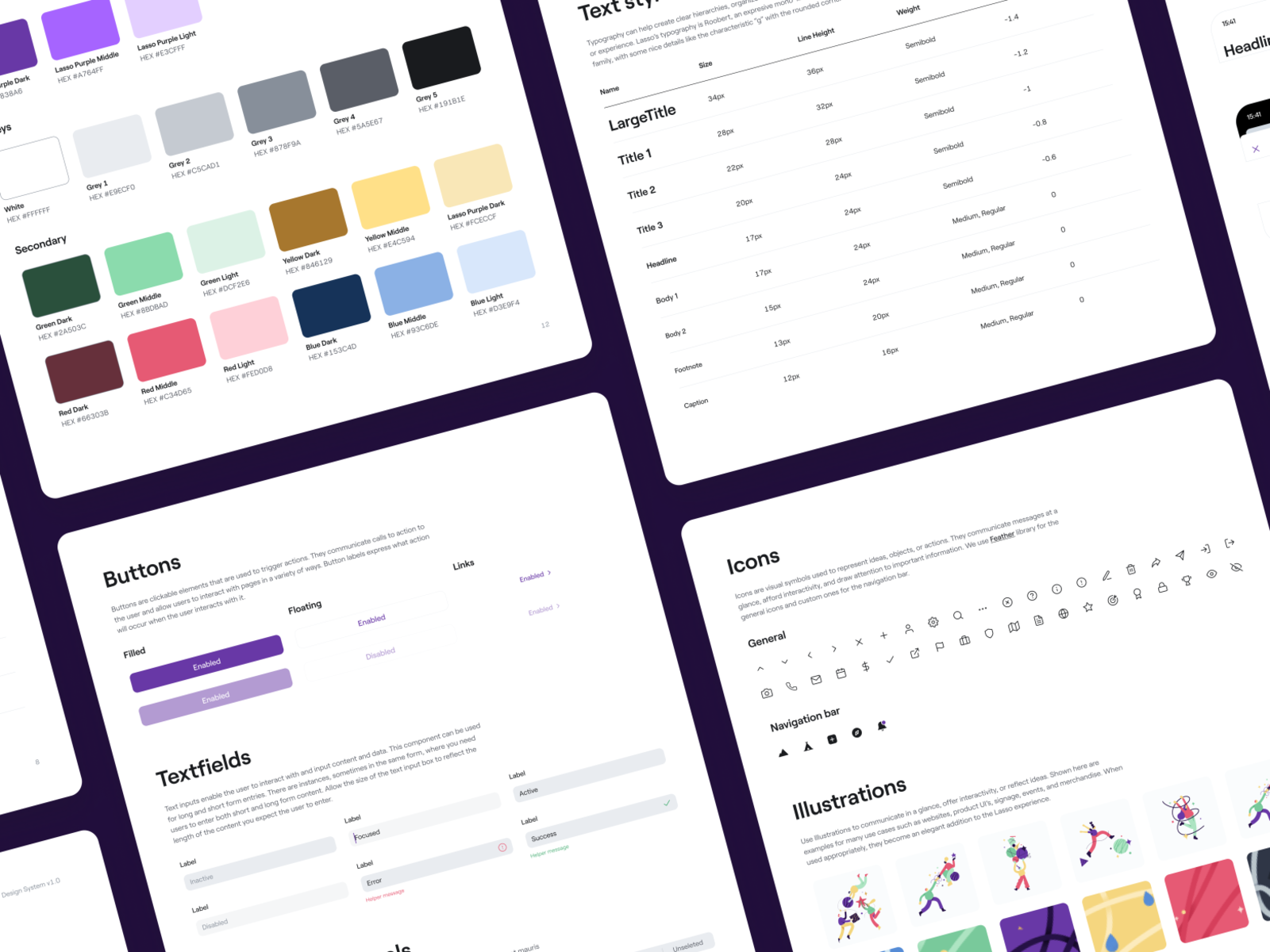
How to maintain design systems: a complete DIY guide for design teams

Maintaining a design system, especially for individual or small design teams, is crucial for ensuring consistency, efficiency, and scalability in your design process.
It takes a lot of time to set up a design system. You have to come up with a set of guiding principles, establish the foundational elements of your digital product, and design its UI patterns.
Reason for maintaining the design systems and its importance
- Improved Consistency: Design systems ensure consistency across all products and platforms within an organization. Consistent design elements, such as colors, typography, and layout, create a cohesive user experience, which is essential for brand identity and recognition.
- Increased Efficiency: Design systems streamline the design and development process by providing reusable components and guidelines. Designers and developers can quickly access pre-defined elements, reducing the time spent on repetitive tasks and allowing them to focus on innovation and problem-solving.
- Growth in Scalability: As products and teams grow, maintaining consistency becomes increasingly challenging. Design systems provide a scalable solution by serving as a single source of truth for design and development standards. This scalability ensures that the user experience remains cohesive and coherent as the organization evolves.
Hence, Sustaining Design Systems is essential for achieving user-centered design across products and platforms. It fosters efficiency, collaboration, scalability, and accessibility, ultimately contributing to the success of the organization and the satisfaction of its users.
How to create a design system?
Whether you're starting a new project or midway through an existing project, you're probably considering the long term benefits of using a design system if you aren't using one already. From here, there are three approaches to using a design system:
- Adopting an existing design system that is already available.
- Adapting an existing design system that exists and modifying it to suit your needs.
- Creating your own custom design system from scratch.
Process for maintaining the design systems
The process of maintaining a sophisticated Design System is much easier if the step are followed in a sequential manner.
These steps include :-
- Establish Clear Guidelines: Define the principles, standards, and best practices that govern your design system. Document them comprehensively to serve as a reference for your team.
- Regular Audits and Updates: Schedule periodic audits of your design system to identify inconsistencies, outdated components, or emerging design trends that need to be incorporated. Update your system accordingly to keep it relevant.
- Version Control: Implement a version control system, such as Git, to manage changes to your design system effectively. This ensures that everyone is working with the latest version and allows for easy rollback if needed.
- Modular Approach: Structure your design system in a modular way, with reusable components that can be easily assembled and adapted for different purposes. This makes it easier to maintain and scale over time.
- Testing and Validation: Test your design system across different platforms, devices, and browsers to ensure compatibility and consistency. Solicit feedback from users and stakeholders to validate the effectiveness of your system.
- Feedback Loop: Establish a feedback loop where users and stakeholders can provide input on the design system. Regularly gather feedback through surveys, usability testing, or user interviews, and use it to iterate and improve your system.
By following these guidelines, web designers or small design teams can effectively maintain a design system that promotes consistency, efficiency, and collaboration in their work.
Does retaining a Design System adds to the cost?
In order to understand this, let us consider some factors :-
- Initial Investment: There's an upfront cost to create a design system, including the time and resources needed to establish the system's components, guidelines, and documentation.
- Ongoing Maintenance: Regular updates and improvements to the design system will require ongoing effort from designers, developers, and other stakeholders. This can include adding new components, refining existing ones, and ensuring consistency across platforms and applications.
- Benefits Outweighing Costs: Despite these costs, maintaining a design system can lead to significant benefits, such as increased efficiency, consistency, scalability, and improved collaboration across teams. These benefits often outweigh the initial and ongoing costs.
- Cost Savings in the Long Run: While there are costs associated with maintaining a design system, it can ultimately save time and resources by streamlining the design and development process, reducing rework, and minimizing inconsistencies.
Overall, while maintaining a design system does add some costs, the investment is usually justified by the long-term benefits it provides to the organization.
Advantages of working in maintained design systems
- Create a unified and polished brand: By using a design system, you'll be able to unify a product's branding faster and speed up the product's development.
- Simplify quality control: With a design system in place, designers and developers can reference a single source of truth to simplify design reviews and spot inconsistencies, drastically simplifying the design and development process.
- Decrease in development expenses: Product development is expensive and time-consuming. Working from an existing design system saves time and money usually wasted on inefficient web development and fixing design debt.
- Develop a consistent outlook: By keeping everything consistent for everyone on the team, a design system helps leaders develop a clear brand and vision, which helps to create a long-term brand recognition strategy.
Wrap Up
Whether you're a small startup or a large company with hundreds of employees, building and maintaining a design system is crucial for avoiding design debt and ensuring a polished and consistent user experience and consistent visual style and design principles.
Design systems are more than simply a compilation of reusable components, design patterns, style guides, and design guidelines to help operationalize and optimize your design efforts, they're a living and breathing representation of your design philosophy that anyone in your team can reference and improve over time.